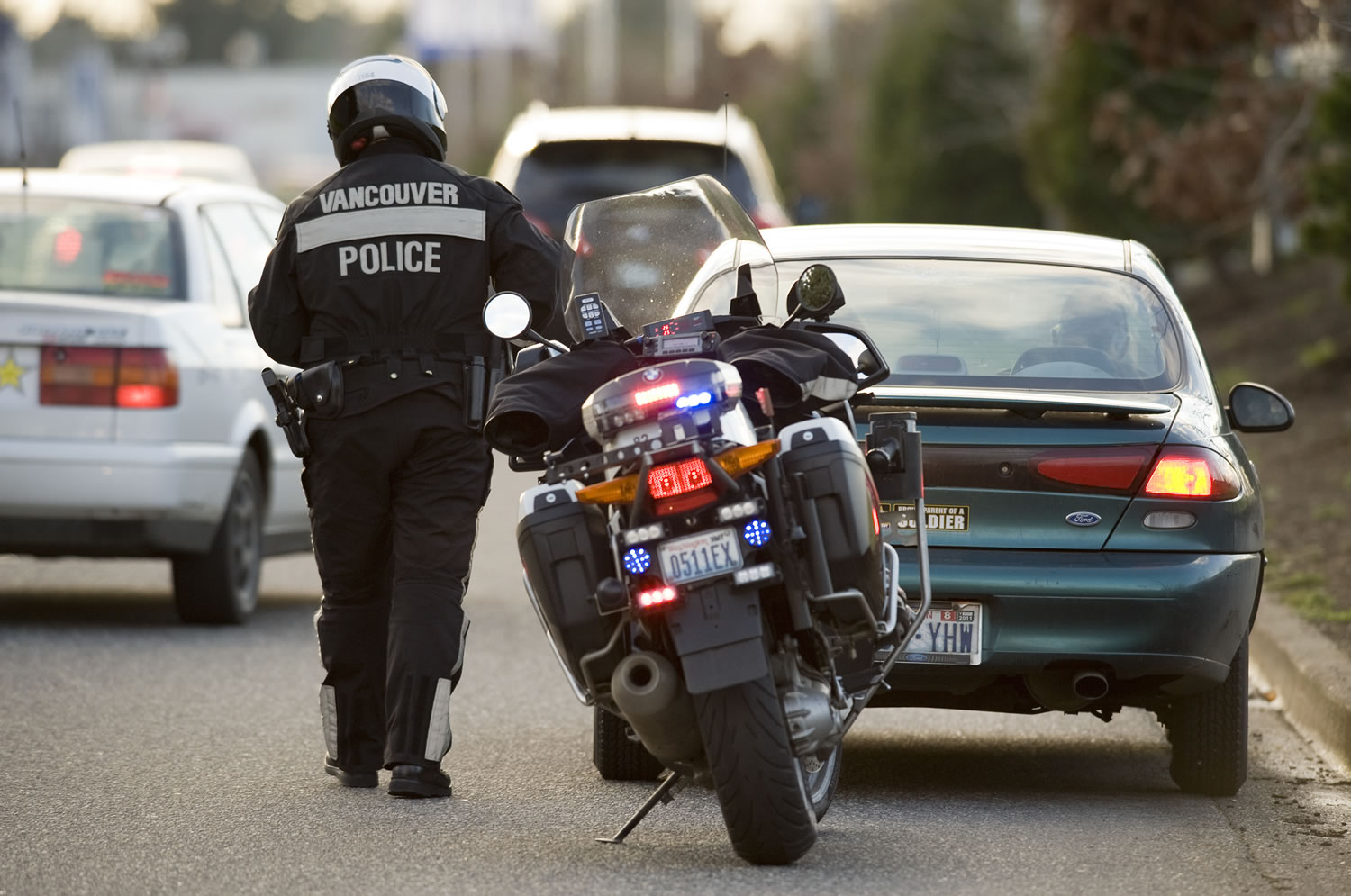Many young drivers in
Washington fail the written exam the first time.
Age 15 to 17: 51%
Age 18 to 19: 40%
Source: Department of Licensing
Several weeks ago, Traffic Sgt. Pat Johns pulled over a woman who was following a car too closely on Highway 500. The guy she was tailing tapped his brakes, signaling her to back off. When she didn’t, Johns put on his patrol car’s flashing lights and pulled her over.
Did you know that guy? he asked her.
No.
Do you know what the safe distance is for following someone?
No.
Do you remember how many seconds you’re supposed to give between cars?
No.
How about car lengths? Does that sound familiar?
No.
Do you remember what the driver’s handbook said?
No.
Johns has been the traffic sergeant at the Vancouver Police Department for three years. Every day, he pulls people over who honestly have no clue what they were doing wrong on the road.
“We can chalk it up to people lying to me, but not everyone is lying,” he said. “You look them in the eye and you can tell they’re honest. They really don’t know.”
Johns said Washington should require every driver to retake the written portion of the driving test every five years to keep drivers safe and competent and to eliminate traffic fatalities. He figures, if drivers have to spend $45 to renew their license anyway, why not make sure they’re up to snuff on traffic safety?




